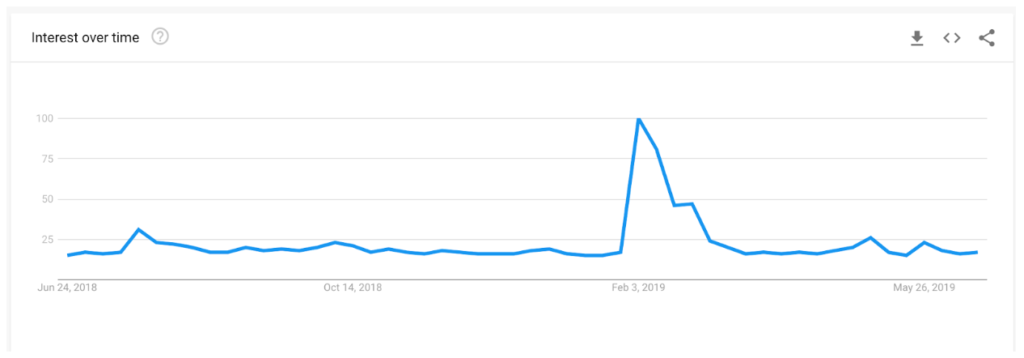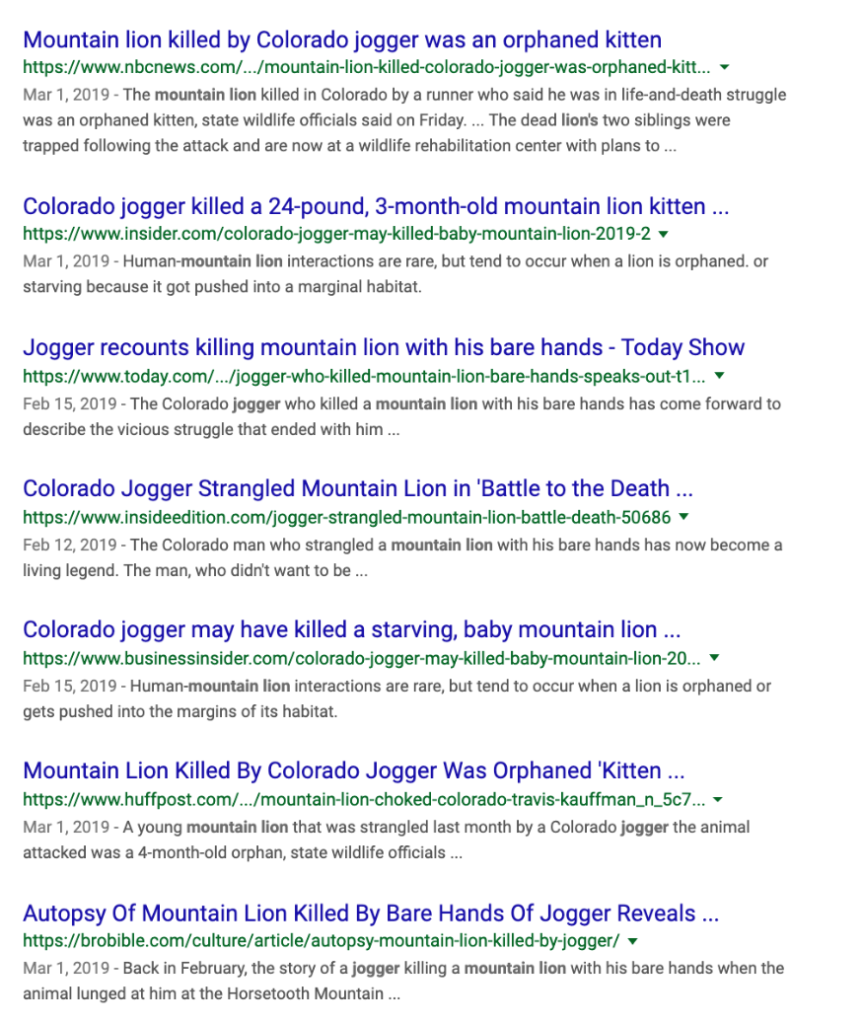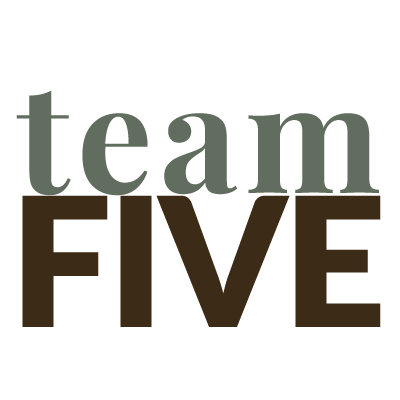
- How were the grant funds used?
Grant Funds were spent on funding a Social Media Manager as well as boosting the WildFutures Facebook page, individual Facebook posts, and Twitter posts.
We used funds to promote the Facebook page overall in order to increase the audience. From July 2017 to June 2019 we spent $2503.06 on these promotions. We gained 21,372 followers from those campaigns, for an average of $0.12 spent per new audience member. These promotions alone had the greatest impact on the Reach of posts as a whole, much greater than the promotion of individual posts.
We also paid to boost individual posts when that post was important and/or of a type that Facebook tends to suppress unless it is boosted (e.g. webinar invites, links to relevant campaigns, etc). We paid a total of $645.83 on boosted posts, usually just $10-$25 per post in order to get it out to a wider audience.
- What methods/data did you use to measure the impact of the program? (Please be specific).
We measured followers and level of engagement on 3 social media channels (Facebook, Twitter, and Instagram) with an emphasis on Facebook. Because this project was largely about educating the public about mountain lions as an important part of the ecosystem, measuring our active audience was the most relevant metric. More people receiving our posts, means more people hearing the message.
Instagram saw great growth in followers, from 80 followers at the beginning of the project to a current following of 5,052. In the last year of the project we decreased posting and engagement practices on Instagram so we could focus more fully on Facebook, but even without active management, Instagram continues to see around 200 points of engagement for each post in the last year.
Twitter began with about 200 followers, and ended with 1,114 followers with 2,806 impressions of our Tweets in the last 28 day period.
Facebook was our main area of focus and it shows. In the first year of the program Facebook followers doubled from 1,400 to 2,952. From then to now, we increased almost 10x to the current total of 26,850 followers.

Our reach and engagement there was also high, showing that our followers were genuinely interested in what we posted. The Reach of each post (the number of people who saw it) ranged from the high hundreds for the least-viewed posts, to our highest unboosted post which reached 11.2K viewers and was shared 238 times. Boosted posts did even better, with the highest viewed post gathering 13.9k views.
Overall our social media audience went from 1,680 followers to the current audience of 33,016. (For comparison, that’s like filling Giants Stadium to 80% capacity.)
- Define the success of the program, its challenges, and its failures, if any.
In collaboration with our Social Media Manager, we set out to increase our social media following with an ad budget that would be considered abysmally small by most internet marketers. This was a huge success, gaining an audience that most non-profits in the same scale of our operating budget would be very happy to have. By comparison, the Mountain Lion Foundation has had a presence on Facebook since 2009 (we started 4 years later in 2013, and didn’t start page promotions until 2017). With essentially an 8 year head start on us, they have an audience just a bit smaller than ours, at 22,239.
With a minimal crew and thoughtful use of our ad budget, we were able to communicate our message of the importance of coexistence with mountain lions to a very wide audience, touching people’s hearts and debunking myths along the way. These were our primary goals, and we feel we met and exceeded them.
We were also able to provide value as part of a network of people and agencies working on mountain lion conservation, in part by providing content for them to share to their own followers. Organizations that shared our content are able to benefit us by spreading our name, as well as benefiting themselves by having easy-to-access, good content to share on their social media channels. For example, we recently posted a beautiful camera trap photo of a mountain lion in the Hollywood Hills. Western Wildlife Outreach shared that post with their own followers, adding the following comment, “Large carnivores and humans can coexist, even on the fringe of urban areas, if we all act respectfully and do our best to deter them from approaching neighborhoods by controlling/protecting attractants. For mountain lions, this means protecting poultry, goats/llamas and pets appropriately with leashes, fences and barns. For more information, visit westernwildife.org.” This post benefitted both organizations, their combined followers, AND of course, mountain lions as a whole.
In recent months, each of our posts was shared from dozens to hundreds of times, by individuals, non-profits, agencies, and activists.
We were challenged in the area of moving people from social media to the website and into signing up for webinars. While we did see slight increases in website traffic during the time of the project, we had hoped for larger increases. We aren’t alone in our frustrations around getting people from social media to take meaningful action, whether that’s signing up for an email list or donating to a fundraising campaign. If we were to continue on, we would consider using some of our budget to pay for blog writing, which would have helped immensely in our ability to attract ongoing viewers to the site. We struggled with coming up with reasons to send people to the site, when the content there remains fairly static. We did post some interviews and other articles about the guests on our webinars and found that we were able to drive viewers to those posts. If we had continued posting blogs more regularly, we believe we would have been able to cultivate a more engaged audience that could have translated better to email subscribers or regular site visitors outside of social media channels.
- What are its immediate and long-term implications?
When the goal is to change public perception and the course of cultural dialogue, the results can be complicated to measure. Did we change the course of public discourse about mountain lions? We feel that the answer is yes. We did not do this single-handedly. There are many organizations out there, from the aforementioned Mountain Lion Foundation to the well known Panthera, working in a similar space. We at WildFutures added our voices to that dialogue, and we feel that our contribution was valuable. We can point to a couple examples:
In early February 2019, a runner was attacked by a mountain lion and he successfully fought back and killed it. The following chart shows all searches for the term “mountain lion” on Google in the last 12 months, and you can see a huge spike in searches on Feb 4th, when this story broke.

But within weeks of the story coming out, the dialogue changed and instead of hailing him as a hero, 5 of the 7 articles returned by a google search for “mountain lion jogger” report the reality that the mountain lion was a 35 pound orphaned kitten.

While no reasonable people held it against him that he protected himself from a wild animal attack, the prevailing discourse was not about a “blood-thirsty wild animal” but instead approached the incredible complexity of sharing space with large predators. The conversation included compassion for both the human and the mountain lion in the story.
We posted about this story a few times on our social media channels and cultivated a conversation in the comments. Of course, there were people in the extremes, who felt we should have no sympathy for the kitten, or for the man, depending on which side they were on. But for the most part, even people who expressed a bias on the side of the man indicated that they understood the complexity of the situation and the importance of acting responsibly in cougar territory. For example, one commenter started by defending the man’s actions, and then added, “That doesn’t mean people should avoid cougar territory, nor does it mean they deserve it if an attack does occur. Enjoy the great outdoors but be smart about it. Don’t go alone, try to avoid going during prime hunting hours (dawn and dusk), and always be conscious of your surroundings! Cougar attacks are very rare, but majority of these cases are desperate animals, either too young to bring down natural prey (as was the case here), too old, or injured/ill. Most attacks on humans are from an animal making one last desperate attempt to stay alive. In the few cases of the culprit being a healthy and capable animal, habituation is the problem.”
We were very happy to see the evolution of this conversation creating the space where even the dissenters acknowledge that humans can take responsibility for practicing avoidance and awareness techniques that allow for coexistence between us and the big cats. We loved seeing people sharing the same advice that we have been sharing for the last several years about how to adventure safely in cougar country.
Similarly, when a mountain biker was killed by a cougar in Washington State last summer, we followed the public dialogue. As always on the internet, there were inflammatory statements made, but the bulk of the conversation did not seem to include any call for action other than increased awareness and utilizing tools for coexistence. Even monitoring the conversation outside of our Facebook page, for example within the Facebook group called Pacific Northwest Outdoor Women (which includes 36k+ members, some of whom knew the deceased person personally) the conversation revolved around personal safety and coexistence, not around any need to eradicate cougars from their territory.
Obviously, we don’t claim credit for this shift in public dialogue. But we think by adding our voice to the many other knowledgeable voices out there calling for respect and protection for these amazing cats that we are lucky to share space with, that we have helped to shape the public dialogue in a way that benefits both humans and cougars. We foresee that conversation continuing well beyond our page, even after we discontinue this project, and that feels like a huge success.







Recent Comments